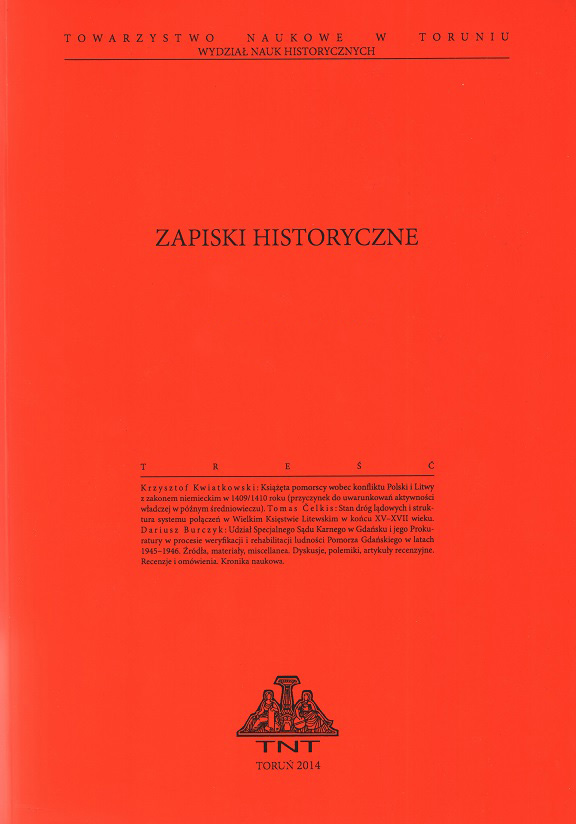Konstruowanie przeszłości
Constructing the Past
The Emergence of Kashubian Folk Costume in the First Half of the Twentieth Century
Author(s): Edmund KizikSubject(s): Cultural history, Customs / Folklore, Ethnohistory, Cultural Anthropology / Ethnology, Interwar Period (1920 - 1939), WW II and following years (1940 - 1949), Post-War period (1950 - 1989)
Published by: Towarzystwo Naukowe w Toruniu
Keywords: Kashubia; ethnography; folk costume; historical iconography; Bożena Stelmachowska; first half of the twentieth century
Summary/Abstract: The attire characteristic for peasants was described by ethnographers from the early nineteenth century, and the interest in folklore itself transformed from amateur item collecting to an academic discipline, namely ethnography. Researchers were intrigued by hand-made folk costumes, which contrasted with the factory-made clothing of the urban population. As the political importance of the peasantry grew, stylised folk costumes became an element of regional and ethnic identity. The motif of peasant culture found its way into global literature and the folk elements into political propaganda of the twentieth century. At the same time the origin of folk costumes and their design arouses controversy among researchers. Are they reconstructions of the past or perhaps ideologically motivated constructs? The article presents this issue on the example of a Kashubian costume created according to the concept of Professor Bożena Stelmachowska (1889–1956). On the basis of previously unexplored descriptions of peasants’ appearance contained in arrest warrants from the first half of the nineteenth century, the sources and research paradigm, which became a basis for the creation of the model Kashubian attire in 1954–1959, have been subjected to criticism. The concept adopted by the older scholarship was not confirmed as no primary sources (material artifacts, iconographic representations, written descriptions, etc.) were found. The similarity of clothes worn by Kashubians with clothes worn by other peasants was demonstrated, and so was the influence of military uniforms on men’s clothes. The model of Kashubian costume proposed by Stelmachowska should be treated as an intellectual construction that reflects certain trends in folklore studies of the time and a response to ideological and propaganda needs that arose in Pomerania after 1945.
Journal: Zapiski Historyczne
- Issue Year: 86/2021
- Issue No: 1
- Page Range: 111-146
- Page Count: 36
- Language: Polish

